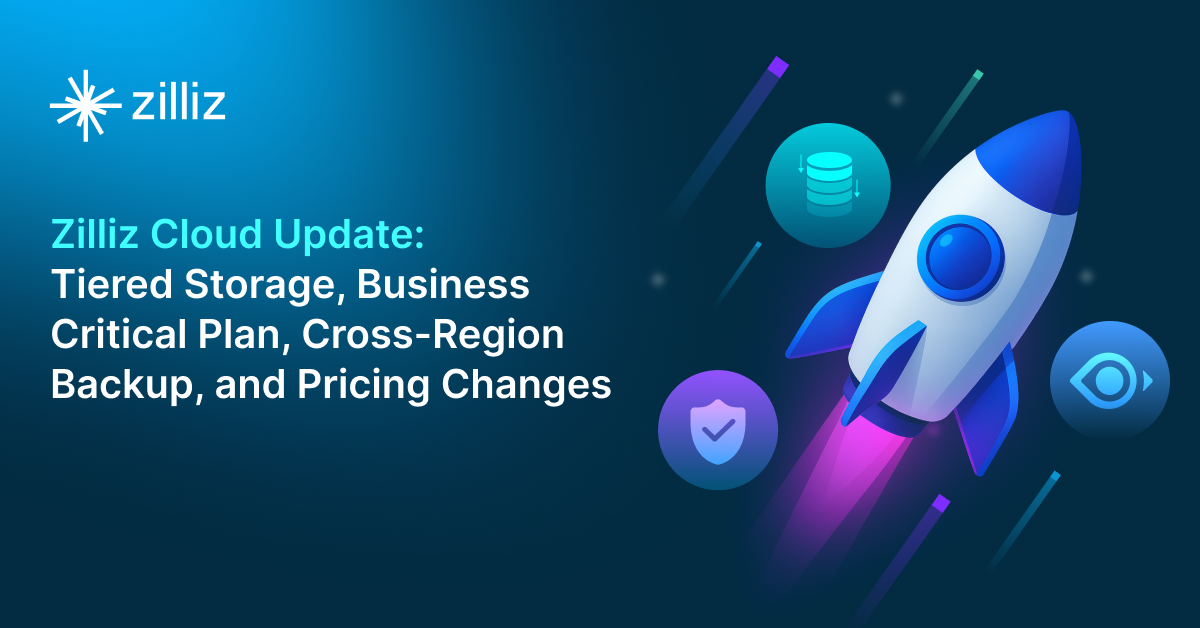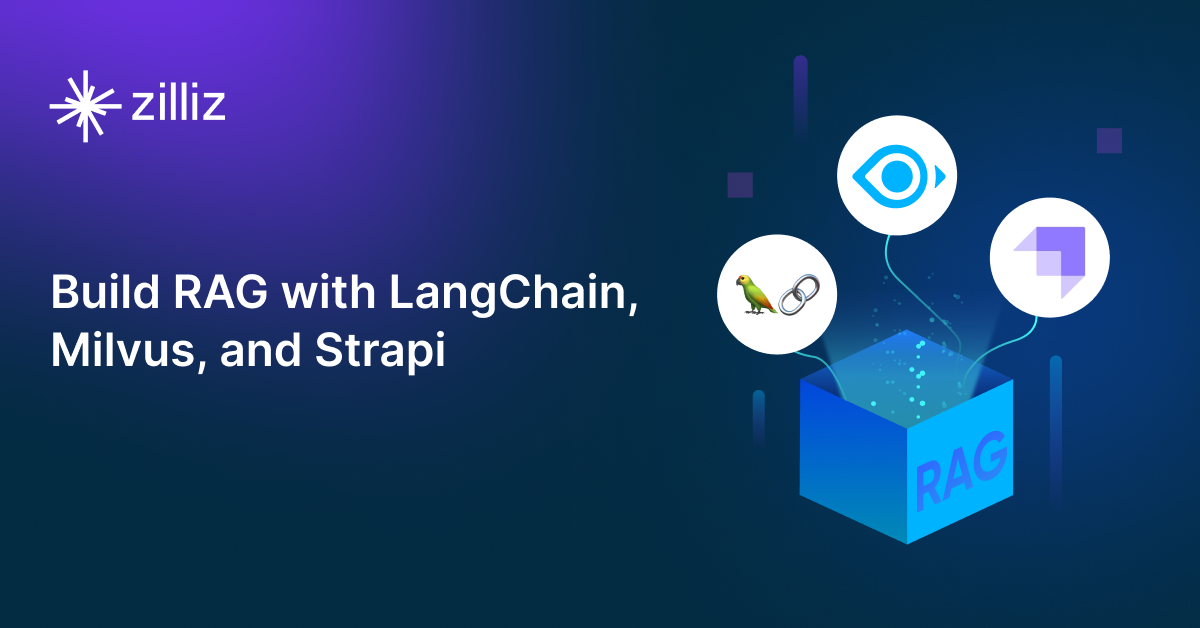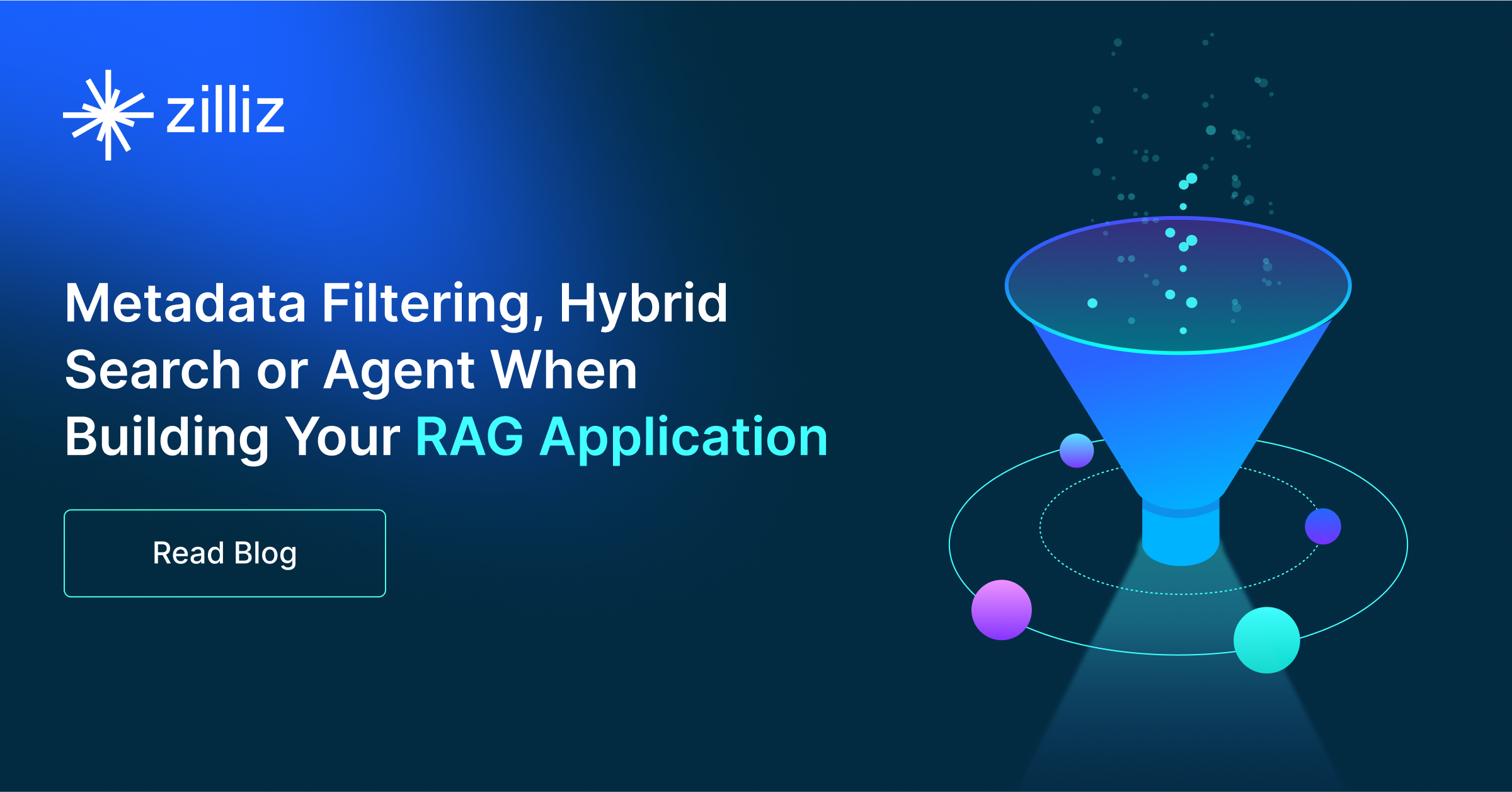Build RAG Chatbot with LangChain, Faiss, Anthropic Claude 3.7 Sonnet, and Google Vertex AI textembedding-gecko@001
Introduction to RAG
Retrieval-Augmented Generation (RAG) is a game-changer for GenAI applications, especially in conversational AI. It combines the power of pre-trained large language models (LLMs) like OpenAI’s GPT with external knowledge sources stored in vector databases such as Milvus and Zilliz Cloud, allowing for more accurate, contextually relevant, and up-to-date response generation. A RAG pipeline usually consists of four basic components: a vector database, an embedding model, an LLM, and a framework.
Key Components We'll Use for This RAG Chatbot
This tutorial shows you how to build a simple RAG chatbot in Python using the following components:
- LangChain: An open-source framework that helps you orchestrate the interaction between LLMs, vector stores, embedding models, etc, making it easier to integrate a RAG pipeline.
- Faiss: also known as Facebook AI Similarity Search, is an open-source vector search library that allows developers to quickly search for semantically similar multimedia data within a massive dataset of unstructured data. (If you want a much more scalable solution or hate to manage your own infrastructure, we recommend using Zilliz Cloud, which is a fully managed vector database service built on the open-source Milvus and offers a free tier supporting up to 1 million vectors.)
- Anthropic Claude 3.7 Sonnet: Anthropic Claude 3.7 Sonnet: Claude 3.7 Sonnet is an advanced AI language model developed by Anthropic, designed to offer enhanced reasoning, alignment, and safety. It excels in tasks requiring sophisticated conversational abilities, providing users with natural, context-aware responses while maintaining ethical and safe outputs. Ideal for applications in customer service, content generation, and dialogue systems where safety and clarity are paramount.
- Google Vertex AI textembedding-gecko@001: This AI model specializes in generating high-quality text embeddings, facilitating superior semantic understanding and context capturing. Its strengths lie in efficient processing and scalability, making it ideal for applications like search, recommendation systems, and natural language understanding tasks that demand precise insights from textual data.
By the end of this tutorial, you’ll have a functional chatbot capable of answering questions based on a custom knowledge base.
Note: Since we may use proprietary models in our tutorials, make sure you have the required API key beforehand.
Step 1: Install and Set Up LangChain
%pip install --quiet --upgrade langchain-text-splitters langchain-community langgraph
Step 2: Install and Set Up Anthropic Claude 3.7 Sonnet
pip install -qU "langchain[anthropic]"
import getpass
import os
if not os.environ.get("ANTHROPIC_API_KEY"):
os.environ["ANTHROPIC_API_KEY"] = getpass.getpass("Enter API key for Anthropic: ")
from langchain.chat_models import init_chat_model
llm = init_chat_model("claude-3-7-sonnet-latest", model_provider="anthropic")
Step 3: Install and Set Up Google Vertex AI textembedding-gecko@001
pip install -qU langchain-google-vertexai
from langchain_google_vertexai import VertexAIEmbeddings
embeddings = VertexAIEmbeddings(model="textembedding-gecko@001")
Step 4: Install and Set Up Faiss
pip install -qU langchain-community
from langchain_community.vectorstores import FAISS
vector_store = FAISS(embedding_function=embeddings)
Step 5: Build a RAG Chatbot
Now that you’ve set up all components, let’s start to build a simple chatbot. We’ll use the Milvus introduction doc as a private knowledge base. You can replace it with your own dataset to customize your RAG chatbot.
import bs4
from langchain import hub
from langchain_community.document_loaders import WebBaseLoader
from langchain_core.documents import Document
from langchain_text_splitters import RecursiveCharacterTextSplitter
from langgraph.graph import START, StateGraph
from typing_extensions import List, TypedDict
# Load and chunk contents of the blog
loader = WebBaseLoader(
web_paths=("https://milvus.io/docs/overview.md",),
bs_kwargs=dict(
parse_only=bs4.SoupStrainer(
class_=("doc-style doc-post-content")
)
),
)
docs = loader.load()
text_splitter = RecursiveCharacterTextSplitter(chunk_size=1000, chunk_overlap=200)
all_splits = text_splitter.split_documents(docs)
# Index chunks
_ = vector_store.add_documents(documents=all_splits)
# Define prompt for question-answering
prompt = hub.pull("rlm/rag-prompt")
# Define state for application
class State(TypedDict):
question: str
context: List[Document]
answer: str
# Define application steps
def retrieve(state: State):
retrieved_docs = vector_store.similarity_search(state["question"])
return {"context": retrieved_docs}
def generate(state: State):
docs_content = "\n\n".join(doc.page_content for doc in state["context"])
messages = prompt.invoke({"question": state["question"], "context": docs_content})
response = llm.invoke(messages)
return {"answer": response.content}
# Compile application and test
graph_builder = StateGraph(State).add_sequence([retrieve, generate])
graph_builder.add_edge(START, "retrieve")
graph = graph_builder.compile()
Test the Chatbot
Yeah! You've built your own chatbot. Let's ask the chatbot a question.
response = graph.invoke({"question": "What data types does Milvus support?"})
print(response["answer"])
Example Output
Milvus supports various data types including sparse vectors, binary vectors, JSON, and arrays. Additionally, it handles common numerical and character types, making it versatile for different data modeling needs. This allows users to manage unstructured or multi-modal data efficiently.
Optimization Tips
As you build your RAG system, optimization is key to ensuring peak performance and efficiency. While setting up the components is an essential first step, fine-tuning each one will help you create a solution that works even better and scales seamlessly. In this section, we’ll share some practical tips for optimizing all these components, giving you the edge to build smarter, faster, and more responsive RAG applications.
LangChain optimization tips
To optimize LangChain, focus on minimizing redundant operations in your workflow by structuring your chains and agents efficiently. Use caching to avoid repeated computations, speeding up your system, and experiment with modular design to ensure that components like models or databases can be easily swapped out. This will provide both flexibility and efficiency, allowing you to quickly scale your system without unnecessary delays or complications.
Faiss Optimization Tips
To enhance the performance of the Faiss library in a Retrieval-Augmented Generation (RAG) system, begin by selecting the appropriate index type based on your data volume and query speed requirements; for example, using an IVF (Inverted File) index can significantly speed up queries on large datasets by reducing the search space. Optimize your indexing process by using the nlist parameter to partition data into smaller clusters and set an appropriate number of probes (nprobe) during retrieval to balance between speed and accuracy. Ensure the vectors are properly normalized and consider using 16-bit or 8-bit quantization during indexing to reduce memory footprints for large datasets while maintaining reasonable retrieval accuracy. Additionally, consider leveraging GPU acceleration if available, as Faiss highly benefits from parallel processing, leading to faster nearest neighbor searches. Continuous fine-tuning and benchmarking with varying parameters and configurations can guide you in finding the most efficient setup specific to your data characteristics and retrieval requirements.
Anthropic Claude 3.7 Sonnet Optimization Tips
To optimize the use of Anthropic Claude 3.7 Sonnet in a Retrieval-Augmented Generation (RAG) setup, focus on ensuring high-quality, relevant retrievals from your document store. Preprocess and index your knowledge base effectively by removing redundancy and structuring content for easy retrieval. Additionally, fine-tune the model on domain-specific data to improve response relevance. Consider batching requests for efficiency and adjusting the temperature and top-k parameters to balance creativity and accuracy. Monitor performance closely and adjust query embeddings to fine-tune the retrieval pipeline, ensuring low-latency and high-accuracy answers.
Google Vertex AI textembedding-gecko@001 optimization tips
Google Vertex AI textembedding-gecko@001 provides strong semantic understanding suitable for a variety of RAG workflows. To optimize retrieval, preprocess text to remove non-essential words and structure content to highlight key information. Use nearest neighbor search with techniques like HNSW or FAISS to enhance retrieval speed without sacrificing accuracy. Optimize batch processing by grouping multiple text queries together, reducing API call overhead and increasing throughput. Fine-tune temperature settings to ensure consistent responses, and adjust top-k or top-p parameters based on the desired level of output diversity. Cache embeddings for frequently used text and set up periodic updates to ensure embedding freshness. Use dimensionality reduction to manage memory usage and storage costs effectively.
By implementing these tips across your components, you'll be able to enhance the performance and functionality of your RAG system, ensuring it’s optimized for both speed and accuracy. Keep testing, iterating, and refining your setup to stay ahead in the ever-evolving world of AI development.
RAG Cost Calculator: A Free Tool to Calculate Your Cost in Seconds
Estimating the cost of a Retrieval-Augmented Generation (RAG) pipeline involves analyzing expenses across vector storage, compute resources, and API usage. Key cost drivers include vector database queries, embedding generation, and LLM inference.
RAG Cost Calculator is a free tool that quickly estimates the cost of building a RAG pipeline, including chunking, embedding, vector storage/search, and LLM generation. It also helps you identify cost-saving opportunities and achieve up to 10x cost reduction on vector databases with the serverless option.
 Calculate your RAG cost
Calculate your RAG cost
What Have You Learned?
By diving into this tutorial, you’ve unlocked the power to build a fully functional RAG system from the ground up! You learned how LangChain acts as the glue that holds everything together, orchestrating workflows between components with elegance and flexibility. With Faiss as your vector database, you discovered how to store and retrieve embeddings at lightning speed, ensuring your system can handle real-time queries without breaking a sweat. The magic of Anthropic’s Claude 3.7 Sonnet shone through as the LLM powerhouse, generating human-like responses that feel natural and insightful—all while balancing speed and cost-efficiency. And let’s not forget Google’s textembedding-gecko@001, which transformed your raw text into rich, meaningful vectors, giving your system the contextual understanding it needs to excel. Together, these tools form a seamless pipeline: ingest data, embed it, store it for quick access, and generate answers that feel almost like mind-reading!
But it doesn’t stop there! You also picked up pro tips for optimizing your RAG pipeline, like tweaking chunk sizes for better embeddings and fine-tuning retrieval parameters to boost accuracy. The free RAG cost calculator you explored is your secret weapon for budgeting smarter and scaling confidently. Now that you’ve seen how these pieces fit together—and how to make them sing—you’re ready to create your own intelligent applications. Whether you’re building chatbots, research tools, or enterprise solutions, you’ve got the blueprint. So go ahead—experiment, iterate, and innovate. The world of AI is yours to shape, and your next breakthrough is just a few lines of code away. Let’s build something amazing! 🚀
Further Resources
🌟 In addition to this RAG tutorial, unleash your full potential with these incredible resources to level up your RAG skills.
- How to Build a Multimodal RAG | Documentation
- How to Enhance the Performance of Your RAG Pipeline
- Graph RAG with Milvus | Documentation
- How to Evaluate RAG Applications - Zilliz Learn
- Generative AI Resource Hub | Zilliz
We'd Love to Hear What You Think!
We’d love to hear your thoughts! 🌟 Leave your questions or comments below or join our vibrant Milvus Discord community to share your experiences, ask questions, or connect with thousands of AI enthusiasts. Your journey matters to us!
If you like this tutorial, show your support by giving our Milvus GitHub repo a star ⭐—it means the world to us and inspires us to keep creating! 💖
- Introduction to RAG
- Key Components We'll Use for This RAG Chatbot
- Step 1: Install and Set Up LangChain
- Step 2: Install and Set Up Anthropic Claude 3.7 Sonnet
- Step 3: Install and Set Up Google Vertex AI textembedding-gecko@001
- Step 4: Install and Set Up Faiss
- Step 5: Build a RAG Chatbot
- Optimization Tips
- RAG Cost Calculator: A Free Tool to Calculate Your Cost in Seconds
- What Have You Learned?
- Further Resources
- We'd Love to Hear What You Think!
Content
Vector Database at Scale
Zilliz Cloud is a fully-managed vector database built for scale, perfect for your RAG apps.
Try Zilliz Cloud for Free


